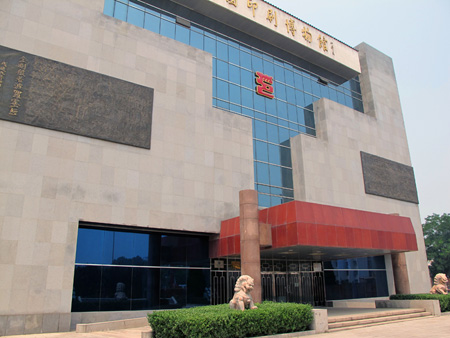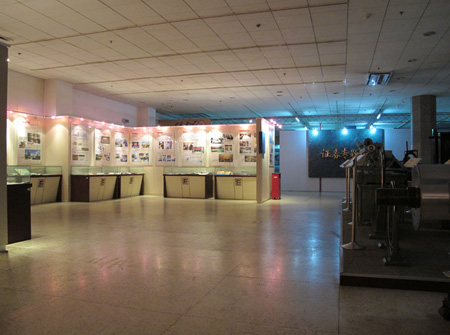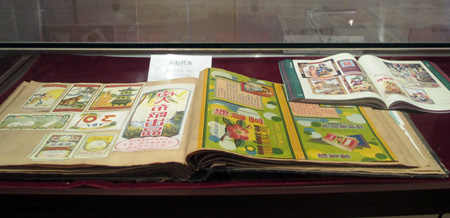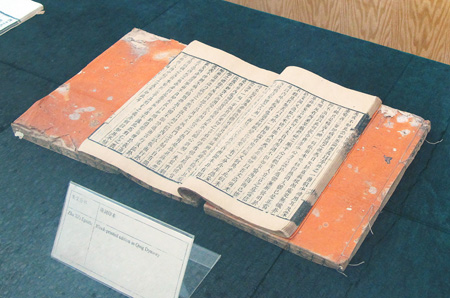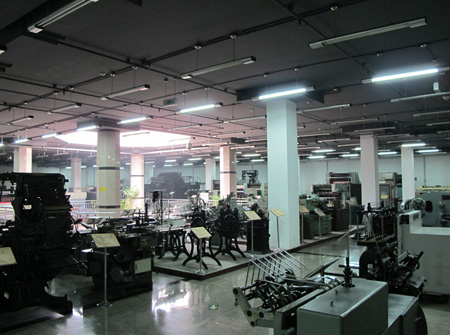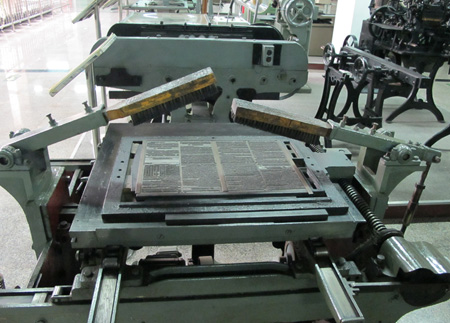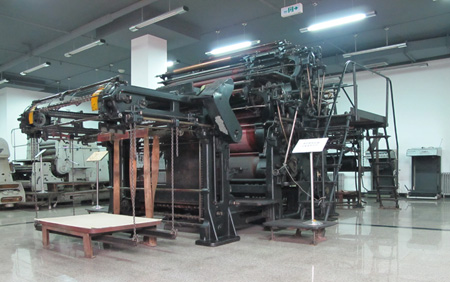China Printing Museum
September 10, 2010
On my travels I’m always on the lookout for all things polar and printmaking, and I did well on both accounts in China recently.
On the polar front, my wife and I managed admission to the Polar Research Institute of China, the government’s main polar science agency. That visit is described on my Long View Project blog over at the CalAcademy site.
In the printmaking department, we made a pilgrimage to Beijing’s China Printing Museum,
located as remotely on the outskirts of town as the Polar Research Institute is. Consequently it was just as empty of visitors, and all 5,000 square meters (16,000 square feet) of the world’s biggest printing museum was ours alone.
The China Printing Museum’s displays are distributed over three floors, with modern printing methods on the first floor and the origins of printing on the third floor. We took the stroll up and backwards in time, though it’s perfectly possible to do it backwards (which is to say forwards), depending on one’s chronological inclination.
The first floor’s Hall of Digital Technology — a misnomer since it actually focuses on the transition from letterpress to offset printing — includes a specialized exhibition area of commercial packaging samples, and its most recent printing equipment appears to date
from the 1980s.
The second floor, or Modern Printing Hall, is more interesting. It traces the development of technologies since 1949, showing the evolution of relief printing, planography, intaglio and stencil printing. There are also special exhibition areas on paper currency, postage stamps, and printing in Hong Kong, Macao and Taiwan.
The third floor’s Ancient Printing Hall is better still. It describes the development of printing from the late New Stone Age to the early 20th century. Most intriguing are the stages of technology and material leading up to Bi Sheng‘s invention of movable type between 1041 and 1048. Samples of his clay type reveal both their revolutionary nature and fragility which limited their practicality for large-scale printing.
Johann Gutenberg, who resolved those issues 400 years later, is acknowledged in a special area that covers the history of printing in Germany and Europe from the 15th century onward. A model of Gutenberg’s wooden hand press and early presswork are included.
As we were leaving the building, a staffer casually offered to show us another exhibit hall downstairs. We nearly passed on it; then acquiesced. Good thing, because The Under-
ground Hall of Printing Machines turned out to be our favorite part of the museum. These
last three photos are of this space.
This cavernous basement is lined with literally hundreds of old presses and pieces of printing equipment dating from 1865 to the 1990s. The space resembles less of an exhibit than an orderly junkyard where the relics are free to be handled and inspected up close.
One of the coolest items was the 1926 American double AO size two-color offset press shown above, weighing nearly 50 tons (99,208 pounds to be exact). The staffer told us that the behemoth’s painstaking disassembly in the U.S. and its reassembly in China was fortunate, for today it remains the only surviving press of its kind.
The China Printing Museum’s unique holdings makes it a worthy destination for printing aficionados. Others may not get past the the fraying displays and poor lighting. Here’s hoping that Beijing’s monument to one of China’s Four Great Inventions gets an upgrade, some visitors, and a more central location sooner than later.
Till then, the China Printing Museum is located at No.25, Xinghua Beilu, Huangcun Town, Daxing District, Beijing, China (北京大兴区黄村兴华北路25号).
Call ahead for hours: 8610-60261237 or 69245559.
